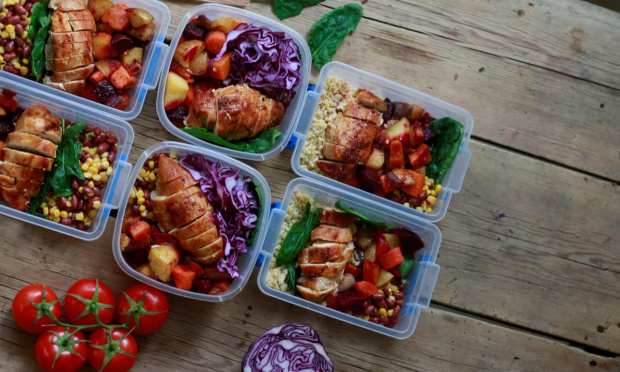Ghost Kitchen Brand Rethinks The Connection Between Virtual And Physical

While ghost kitchens — delivery-only restaurants with no consumer-facing physical presence — have been around for a few years now, the model has really taken off since the start of the pandemic, going from a novelty to a mainstay of the delivery space, with major restaurant chains such as Dave & Busters and Chili’s debuting their own online-only offerings. Now, as more and more restaurant brands enter the digital space with their virtual offerings, leading businesses are finding new ways to set their brands apart.
Hospitality company SBE Entertainment Group, for one, has created C3 (which stands for Creating Culinary Communities), a culinary brand finding new ways to use the ghost kitchen model. Recently, C3 announced a partnership with apartment community Kenect by Akara Living in which C3’s ghost kitchen brands will be integrated into the residential properties. Typically, one thinks of virtual as operating out of restaurants’ existing kitchens. Now, with this partnership, the culinary brand suggests a new way of thinking about how ghost kitchens can interact with physical spaces.
“During the pandemic real estate space has been severely underutilized, which made us think about how we could reinvent these spaces in the most impactful way possible,” C3 Senior Vice President of Operations Joey Simons told PYMNTS in a recent interview. “Earlier this year, we started injecting C3 digital kitchens into shuttered restaurants and underused hotel kitchens. Integrating our digital kitchens into apartment communities is a natural next step to continue unlocking the value of underutilized real estate.”
Reaching Consumers Across Channels
Unlike many other virtual restaurants, C3’s presence in Kenect communities features both delivery-only offerings and consumer-facing physical locations, allowing the company to take advantage of the unique capabilities of each. As Simons put it, “C3 is different from other ghost kitchen brands because delivery isn’t critical to the success of our brand. C3’s diversified and omnichannel approach is what ultimately sets us apart from competitors.”
In addition to diversifying C3’s offerings, the consumer-facing cafés also gives the company to establish a presence outside of the apartment communities served by the ghost kitchens, broadening the kitchens’ reach to the neighborhoods surrounding the Kenect properties.
“With a ghost kitchen and street-facing café at each location, we will be able to service not only Kenect residents and members, but also the local community through a delivery and a grab-and-go model,” said Simons. “While all food will be made from the same kitchen, the cafés will serve as a tangible four-wall location where customers can interact with the brands and find convenient options for meals on the go.”
Digital Restaurants In The Connected Economy
C3 takes a contextual approach to expansion, integrating its offerings into spaces that consumers frequent in their daily lives and finding ways to maximize the capabilities of each of its spaces. To that end, C3 currently has a number of other partnerships in the works, launching digital food halls in hotels and hosting a virtual ice cream shop in its kitchens in partnership with Unilever.
In choosing its partners, the culinary brand looks for forward-thinking businesses that will propel its brands into the future. Simons explained, “C3’s partners not only have a strong understanding of the current market, but also foresight about future market trends. In turn, C3 brings an unmatched pipeline, ability to scale and an exceptional culinary team. This allows both parties to maximize operating efficiency, provide more robust guest/customer-facing services, streamline internal services and maintain a low capital spend.”
The brand looks to establish its presence not just as a listing on an online marketplace, but as a key part of consumers’ lives. To that end, C3 recently moved all its offerings onto its new in-house delivery app, allowing the brand to own its relationship with consumers at every step of the process.
“C3 is very much a lifestyle brand,” said Simons. “We integrate this into the customer experience from every facet of the business, from ordering food via our just launched proprietary CITIZENS GO app to the quality of ingredients used and even the packaging in which it arrives at the door. Every facet of C3 is created to ensure a superior experience at every consumer touchpoint.”
The Contact-Centric Future Of Delivery
While many ghost kitchen brands rely on the idea that demand for delivery will remain high after the vaccine rollout is complete, with consumers who have grown used to the convenience of the channel continuing to seek it out, C3 believes that a robust physical presence will be essential in the post-pandemic future.
“Delivery will inevitably stabilize when more people are vaccinated and consumers return to in-person experiences,” said Simons. “This is reflected in C3’s diversified, omnichannel business model that comprises not only delivery-focused brands but also brick-and-mortar restaurants, food halls and branded locations in highly trafficked real estate including malls and airports.”
Far from predicting a contact-free future, as previously in-person experiences increasingly move online, Simons instead believes that the brands that will thrive in years to come will be those that can create a tactile connection with consumers.
Simons noted that in C3’s locations — hotels, apartment communities and “eventually” airports and shopping malls — consumers can “see, feel and ‘touch’ every aspect of the brand to establish a connection.” He predicts that this contact-heavy connection will be key to C3’s brands’ future success.
“Consumers feel most connected to brands they can see, touch, and connect with in person,” said Simons. “These are the brands that will survive on and off the delivery apps when the pendulum swings back toward in-person dining experiences.”
